American white oak is the trade name for a variety of hardwood species from the Quercus genus. The timber is imported from eastern USA and used for a variety of applications, including furniture, flooring and joinery.
Northern White Oak, Southern White Oak, True White Oak, White Oak, Overcup Oak, Swamp Chestnut Oak, Chestnut Oak (Q. prinus, Q. montana), Overcup Oak (Q. lyrata), Swamp Chestnut Oak (Q. michauxii)
Quercus alba
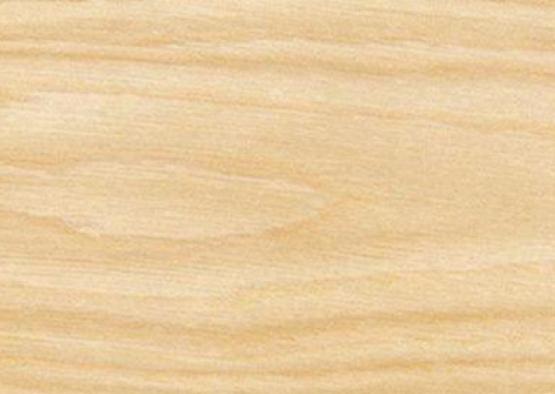
American white oak is a hardwood common throughout the eastern United States. The name 'white oak' encompasses numerous species, eight of which are commercially available as timber. Very similar in appearance and colour to the European oak, American white oak has light-coloured sapwood and a light to dark brown heartwood. White oak is mostly straight grained with a medium to coarse texture, with longer rays and more figure than American red oak. It has large distinctive growth rings, and some medullary rays may be present.
American white oak is used for a wide range of applications, including shipping and boat building, flooring, architectural joinery, exterior joinery, railways sleepers and timber bridges due to its strength and resistance to decay. It is also an excellent timber for high-grade furniture, interior woodwork and paneling. Because of its impermeability, the timber is suitable for vats and casks holding liquids such as wine and spirits.
American white oak is a hard, heavy wood, and has low stiffness and good overall strength, making it increasingly popular as a structural timber. It also has very good steam bending properties. White oak machines well and is easy to glue, nail and screw. It readily accepts stains and polishes to a good finish. The heartwood is susceptible to lyctid borer attack and to termites.
American white oak is imported into Australia and is readily available through specialist wood dealers.
Shrinkage
| Very Low | Low | Medium | High | Very High | |
|---|---|---|---|---|---|

|

|
||||
Tangential : |
6.60%
|
||||
Radial : |
3.20%
|
||||
Unit Movement Tangential: |
0.37%
|
||||
Unit Movement Radial: |
0.18%
|
Strength Group

Very High |
High |
Reasonably High |
Medium High |
Medium |
Reasonably Low |
Low |
Very Low |
||
Unseasoned: |
S1 |
S2 |
S3 |
S4 |
S5 |
S6 |
S7 |
S8 |
|
|---|---|---|---|---|---|---|---|---|---|
Seasoned: |
SD1 |
SD2 |
SD3 |
SD4 |
SD5 |
SD6 |
SD7 |
SD8 |
|
 |
Stress Grade

| Structural No. 1 |
Structural No. 2 |
Structural No. 3 |
Structural No. 4 |
Structural No. 5 |
|
Unseasoned: |
|
|
|
|
|
Seasoned: |
F14 |
F11 |
F8 |
F7 |
F5 |
Density per Standard

Seasoned: |
750kg/m3
|
|---|---|
Unseasoned: |
985kg/m3
|
Joint Group

Very High |
High |
Reasonably High |
Medium |
Low |
Very Low |
|
Unseasoned: |
J1 |
J2 |
J3 |
J4 |
J5 |
J6 |
|---|---|---|---|---|---|---|
 |
||||||
Seasoned: |
JD1 |
JD2 |
JD3 |
JD4 |
JD5 |
JD6 |
 |
Colour

| White, yellow, pale straw to light brown | Pink to pink brown | Light to dark red | Brown, chocolate, mottled or streaky | |
 |
||||
Mechanical Properties
Modulus of Rupture - Unseasoned: |
57
|
|---|---|
Modulus of Rupture - Seasoned: |
105
|
Modulus of Elasticity - Unseasoned: |
8.6
|
Modulus of Elasticity - Seasoned: |
12.3
|
Maximum Crushing Strength - Unseasoned:  |
25
|
Maximum Crushing Strength - Seasoned: |
51
|
Impact - Unseasoned: |
|
Impact - Seasoned: |
|
Toughness - Unseasoned: |
High - 25 Nm and above
|
Toughness - Seasoned: |
High - 25 Nm and above
|
Hardness - Unseasoned: |
4.7
|
Hardness - Seasoned: |
6
|
Durability
| Low | Moderate | Reasonably High | High | |
| (0 - 5 yrs) | (5 - 15 yrs) | (15 - 25 yrs) | (more than 25 yrs) | |
In-Ground: |
 |
|||
| (0 - 7 yrs) | (7 - 15 yrs) | (15 - 40 yrs) | (More than 40 yrs) | |
Above ground: |
||||
| (0 - 20 yrs, usually < 5) | (21 - 40 yrs) | (41 - 64 yrs) | (More than 60 yrs) | |
Marine Borer Resistance: |
 |
Lyctid Borer Susceptibility: |
Susceptible |
|---|---|
Lyctid Borer Susceptibility - Other: |
|
Termite Resistance: |
Not Resistant
|
Fire Properties
| 1 - non-combustible | 2 - reasonably non-combustible | 3 - slightly combustible | 4 - combustible | |
Fire Properties Group |
Average Specific Extinction Area: |
<250
|
|---|---|
Bushfire Resistance: |
BAL 12.5 and 19 - All AS 3959 Required Applications
|
The heartwood of American white oak is pale yellow-brown to mid-brown, sometimes with a pink tinge. The sapwood is light coloured. It is mostly straight grained with a medium to coarse texture, and with longer rays and more figure than red oak. It has large distinctive growth rings and some medullary rays may be present.
In the United States American white oak is used for a wide variety of purposes, including structural, exterior and interior applications, and in the making of vats for spirits and wine. Due to its interesting and prominent grain pattern and consistency of colour throughout the range of subspecies marketed as American white oak, it is a popular species for flooring, and in Australia is mostly for this purpose and for joinery and furniture.
American white oak is a hard and heavy wood, with low stiffness and medium crushing and bending strength. It also has extremely good steam bending properties. American white oak is easy to machine, nail, glue and screw. It stains easily and can take a wide variety of colours. It is a slow-drying wood, so care needs to be taken to avoid checking. Also, given its high shrinkage rate, under variable moisture conditions it is susceptible to some movement.
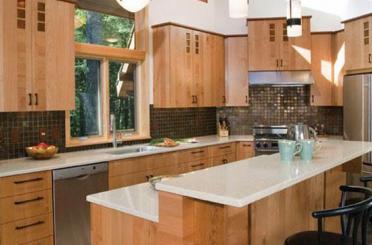
Joinery
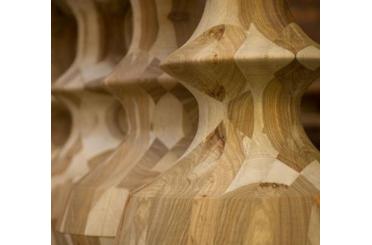
Mouldings
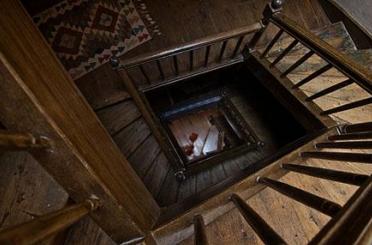
Rails and Balustrades, Interior
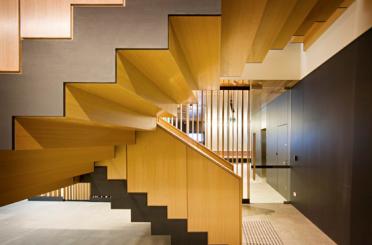
Stairs, Interior

Flooring
Allied Forest Products
Austim Pty Ltd
Australian Timber

Branches Timbercraft

Briggs Veneers Pty Ltd
Britton Timbers

Classy Timber Flooring

Coffs Harbour Hardwoods

Creative Timber World

Fewings Joinery Pty Ltd

Floors of Distinction

Garde Timber Pty Ltd

GreeniGo
Hammersmith

HESS TIMBER GmbH
Lemlex Joinery

Ludbrook’s Joinery
M1 Timber Works Pty Ltd

Market Timbers

Matilda Veneer
McCormacks Australia

McKay Joinery

Ridgewood Timber Pty Ltd

Stora Enso Australia
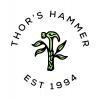
Thor’s Hammer

Timbeck Architectural

Timber Blitz Pty Ltd










